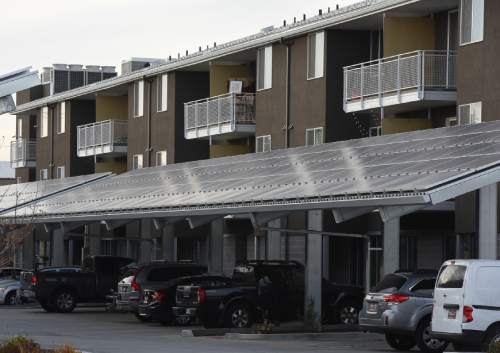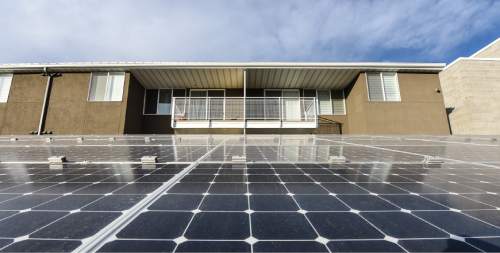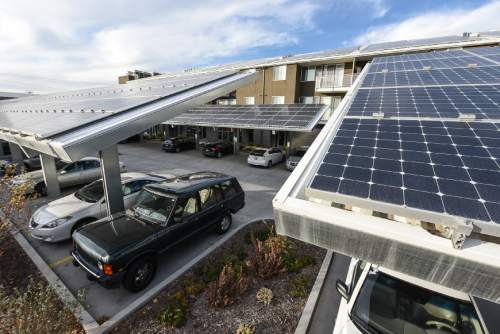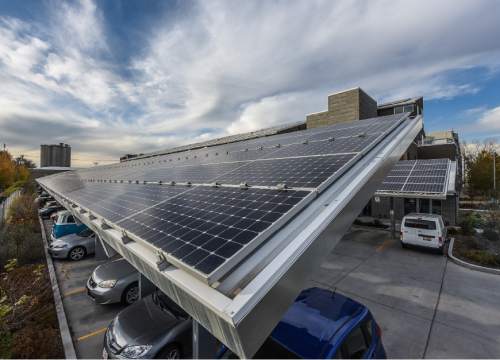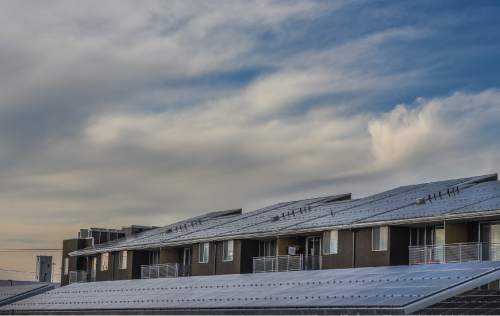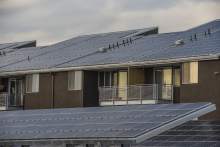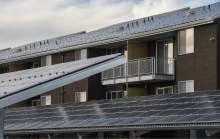This is an archived article that was published on sltrib.com in 2015, and information in the article may be outdated. It is provided only for personal research purposes and may not be reprinted.
Utahns with visions of solar-powered homes dancing in their heads might want to make sure they put the rooftop panels on wishlists they send to Santa Claus this year.
Next year will be consumers' last chance to take advantage of a sizable federal rebate for new solar installations, and cash incentives available through Rocky Mountain Power could be coming to an end as well.
The state's solar tax incentives aren't going anywhere, but the sunset of the other incentives, as well as the declining price of solar power, has industry experts anticipating an uptick of solar installations in the coming year.
"There's always a chance the tax credit could be extended last minute," said Jeffery Barrett, deputy director of the Governor's Office of Energy Development. "But right now I'd put my money on it going away, and that this year is a good year to invest."
With the federal solar-tax credit set to expire on Dec. 31, 2016, residents who install a solar array at their homes can add to their tax return a credit of up to 30 percent of the cost of that installation. A similar credit for businesses will cut the tax credit from 30 percent to 10 percent for commercial projects completed after Dec. 31, 2016.
The state's tax credit, which Barrett said will remain in place for the foreseeable future, can credit residents up to 25 percent of the cost of a new solar installation or $2,000, whichever is less. Commercial projects are eligible for a credit of up to 10 percent of the cost of an installation up to $50,000.
The state and federal credits may be used simultaneously.
The fact that the federal credit has no cap makes it especially attractive, Barrett said. And that has businesses, even solar contractors committed to sell to Rocky Mountain Power, racing to get projects online in 2016.
"We have a lot of these qualifying facilities coming online this next year," said Paul Murphy, a spokesman for Rocky Mountain Power.
Rocky Mountain Power's own cash incentive program, the Utah Solar Incentive Program, may also end in the near future. The program is officially set to end in two years, Murphy said, and there has been talk that the program's funding may be better used elsewhere.
The Solar Incentive Program offers cash rebates of $0.65 to $1.10 per watt of newly installed photovoltaic panels. The rebates are awarded to various solar projects — residential and commercial alike — according to a lottery.
Those who would like to enter a planned project into the lottery must submit applications between Jan 15 and Jan. 28.
Murphy also noted that the price of solar has dropped dramatically and continues to do so — meaning residents shouldn't necessarily rush to acquire solar power, he said. Rocky Mountain Power recently purchased solar power for under $4 per kilowatt hour; a few years ago it was going for $12.
"If you're going to do it, 30 percent is quite a savings," Murphy said. "But the price could keep coming down."
Barrett agreed that the "unfathomable" drop in the cost of solar installation should be a factor in a purchasing decision. With that in mind, he said, he doesn't expect the rolled-back incentives to prevent anyone from installing solar beyond 2016 — not with the way solar's popularity has increased. He expects that as many as 1,500 Utahns will file for a solar tax credit on their 2015 taxes after installing a new project at their home or business. He expects an even larger number in years to come.
"I'm not trying to sell anything to anyone," he said, "but if you look at all the factors in play, things are aligning right now."
Twitter: @EmaPen




